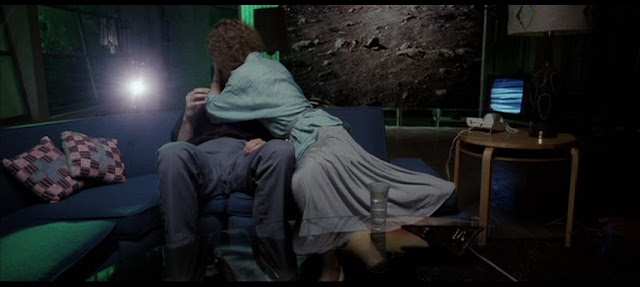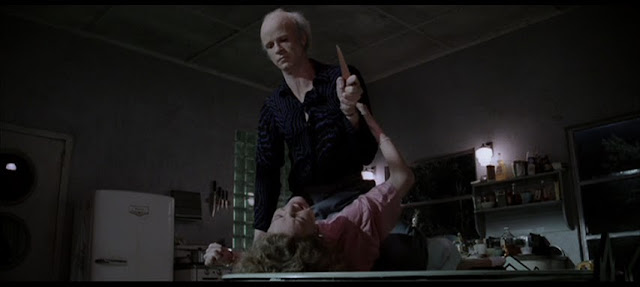CATEGORY: MOVIES; WARNING: THIS ANALYSIS CONTAINS SPOILERS!!



There is a button that links to this table of contents, at the bottom of each post in the analysis. The parts of the analysis having to do with the hidden plot, are denoted below by use of '
(HP)' next to the part number.
part 1 (HP) - Introduction to the analysis; suggestions that Graham is 'like' the killer, Dollarhyde
part 2 (HP) - There is a killer within Graham
part 3 - Speech peculiarities of some of the characters
part 4 (HP) - Problems with the FBI analysis on the tissue note hair sample
part 5 (HP) - Problems with the teeth cast and the bite marks
part 6 - A sign of Graham's wounded psyche
part 7 (HP) - Graham's visit with Hannibal Lecktor, and the events surrounding it
part 8 (HP) - Lecktor wrote the top portion of the tissue note; details on the preparation of the note
part 9 (HP) - Dr. Dominick Princi is involved in a deception
part 10 (HP) - A detailed discussion of the contents of the toilet tissue note
part 11 (HP) - Continuation of the discussion about the tissue note
part 12 (HP) - Graham is manipulated into going to Florida
part 13 - Discussion of the book code; reference is made to the biblical book of Revelation
part 14 - General discussion of the biblical book of Revelation
part 15 - William Blake's Great Red Dragon paintings; the biblical book of Revelation, chapter 12
part 16 - Contrapasso in the movie
part 17 - The Whore of Babylon and the Beast of Revelation
part 18 (HP) - Graham's family is relocated; Reba sleeps with Dollarhyde
part 19 - Using St. Augustine's
City of God to interpret
Manhunter; Augustine on Babylon
part 20 - General discussion of St. Augustine's
City of God
part 21 (HP) - Graham's phone conversation with Lecktor; Lecktor's mention of bodily organs
part 22 - Man as a microcosm of the universe
part 23 - St. John of Patmos, author of the book of Revelation
part 24 (HP) - John the Baptist, 'forerunner' of Jesus
part 25 - Augustine on the Platonists; relationship to John the Baptist
part 26 (HP) - More on Lecktor's manipulation of Graham: Will is to desire to have the power of God
part 27 - References to randomness and games of chance in the movie
part 28 - More on speech in the movie
part 29(HP) - Lecktor's call to Dr. Bloom's office
part 30 (HP) - Lecktor and Dr. Bloom are working together, against Will
part 31 (HP) - Molly and Dr. Bloom are having an affair; Bloom is being set up by Lecktor
part 32 - St. Augustine on friends and family as foes
part 33 - Another reference to games of chance in the movie
part 34 - The Tower of Babel
part 35 - The biblical book of Jeremiah
part 36 - A couple of miscellaneous observations about the film - references to water
part 37 (HP) - Graham's revelation on how Dollarhyde selects his victims
part 38 (HP) - The reason no one bothered to match the tissue bite marks with the teeth cast
part 39 (HP) - Molly's name is a reference to the character 'Molly Bloom' in James Joyce's
Ulysses
part 40 (HP) - How Lecktor's manipulation of Graham is to prevent the second coming of Christ
part 41 (HP) - The underlying connection between Graham and Dollarhyde
part 42 - Francis comes to despise Reba after sleeping with her
part 43 (HP) - Attempting to determine Kevin's true parentage
part 44 (HP) - Molly was previously married to Dr. Bloom, and she is trying to get him to come back to her
part 45 - More references to
water in the movie; all of the references to water in the film, are references to the three days and nights the biblical prophet Jonah spent inside the belly of a whale.
part 46 (HP) - Molly is Kevin's natural mother, and she is hiding this fact from Will
part 47 (HP) - The
Ulysses reference is a hint that there is incest occurring in
Manhunter
part 48 (HP) - Beverly Katz, the woman who did the hair analysis, is involved in the deception of Graham
part 49 (HP) - Molly has committed incest with her own son
part 50 - More miscellaneous observations about the movie
part 51 - Jonah and Ninevah
part 52 - Uses of the number three (3) in the movie, are references to the three days and nights Jonah spent inside the whale's belly
part 53 - Augustine explains to us why Dollarhyde has a good, or at least a sensitive, side to him
part 54 (HP) - The source of the tissue note hair is determined
part 55 - Various lampshades in the movie suggest the idea of an 'alien presence'
part 56 (HP) - Graham and Dollarhyde are both trying to become 'the light'
part 57 (HP) - Dr. Bloom and Molly are half-siblings; the doctor represents Dionysus, and Molly represents Aphrodite
part 58 (HP) - Will finds out about the incest taking place between Molly and Kevin
part 59 - More on planets and bodily organs; Dollarhyde represents the Greek god Ares, and Lecktor represents Hermes
part 60 (HP) - Etymology of the name 'Jack' - Crawford represents John the Baptist
part 61 - Augustine on Jonah
part 62 - Mentions of the number six (6) in the movie are references to the
six ages of the world
part 63 - The Leeds murders were committed during the 'harvest moon'; the 'blood moon' occurs one month later
part 64 (HP) - The metaphorical relationship between Graham, Katz, and Lecktor (the Melchizedek allegory)
part 65 (HP) - Lecktor as a 'false doctor'
part 66 - Augustine on the idea of cyclically reoccurring events
part 67 - Psychopomps; 'mediation' between Graham's unconscious and conscious
part 68 (HP) - Washington, D.C. represents the ancient Egyptian city of Heliopolis
part 69 - Reba represents Rhea Sylvia; confirmation of the fact that Reba has been impregnated by Dollarhyde
part 70 (HP) - The relationship between Beverly Katz and Brian Zeller
part 71 - Augustine: Of the genealogy of Shem, in whose line the city of God is preserved until the time of Abraham
part 72 - Augustine on Shem and Japheth
part 73 - Will Graham represents the Greek god Adonis
part 74 (HP) - Jimmy Price is involved in the deception of Graham; Dollarhyde represents the Freemasons
part 75 (HP) - Lloyd Bowman is involved in the deception of Graham
part 76 (HP) - Apprehending Dollarhyde; summary of the hidden plot
part 77 - Dollarhyde represents the biblical giant, Nimrod; the clash between Nimrod and Abraham
part 78 (HP) - Francis Dollarhyde also represents a marionette, being controlled by a Satanic force
part 79 (HP) - The ultimate underlying message of
Manhunter
part 80 (HP) - The film's ultimate underlying message (cont'd)
part 81 - Comparison with the
Red Dragon film; more on the Blake paintings
UPDATE: The '
unified analysis' of the Lecter series of movies contains some more posts for
Manhunter



















































